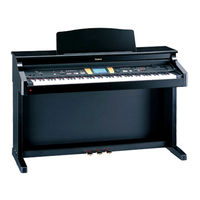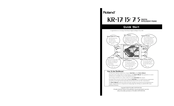Roland KR-7 Manuals
Manuals and User Guides for Roland KR-7. We have 5 Roland KR-7 manuals available for free PDF download: Owner's Manual, Quick Start Manual, Addendum
Roland KR-7 Owner's Manual (200 pages)
Roland Owner's Manual Digital Intelligent Piano KR7/5
Brand: Roland
|
Category: Musical Instrument
|
Size: 6 MB
Table of Contents
Advertisement
Roland KR-7 Owner's Manual (200 pages)
Digital Intelligent Piano
Brand: Roland
|
Category: Musical Instrument
|
Size: 9 MB
Table of Contents
Roland KR-7 Quick Start Manual (20 pages)
Digital Intelligent Piano
Brand: Roland
|
Category: Musical Instrument
|
Size: 0 MB
Table of Contents
Advertisement
Roland KR-7 Quick Start Manual (2 pages)
Intelligent Piano
Brand: Roland
|
Category: Musical Instrument
|
Size: 0 MB
Roland KR-7 Addendum (2 pages)
Roland KR-5: User Guide
Brand: Roland
|
Category: Musical Instrument
|
Size: 0 MB




